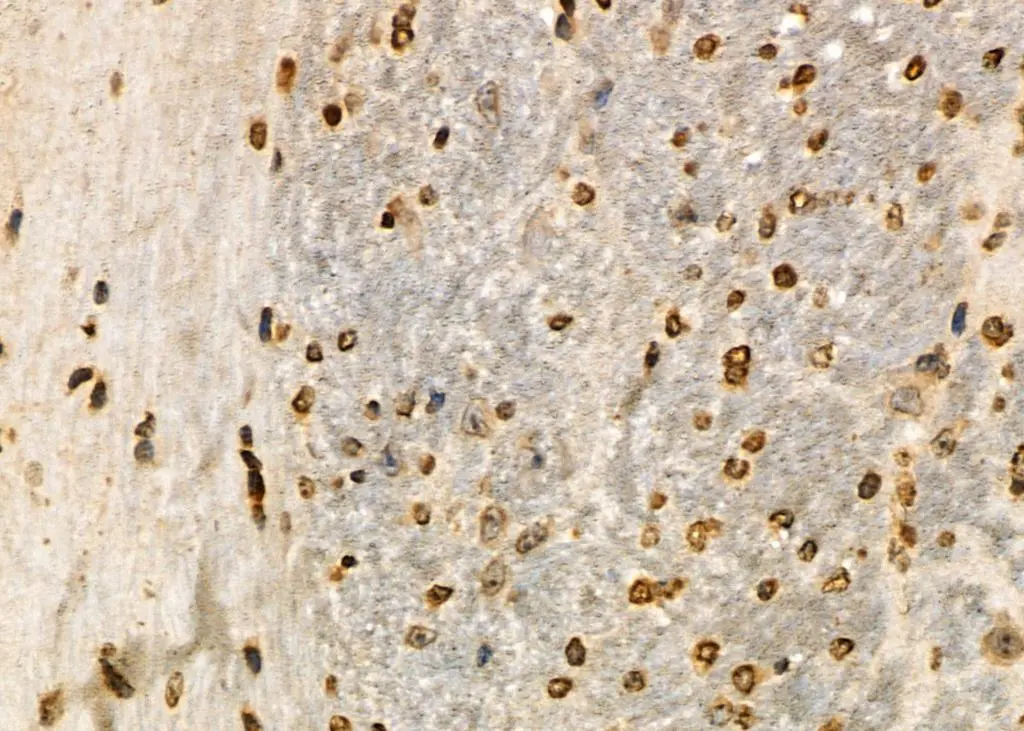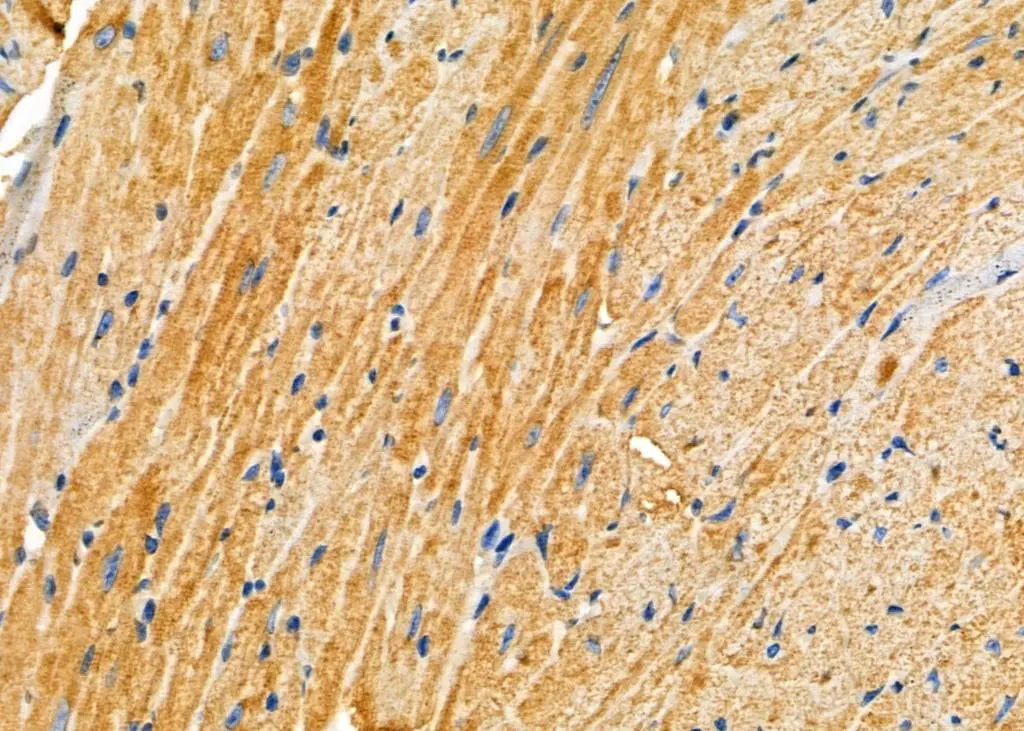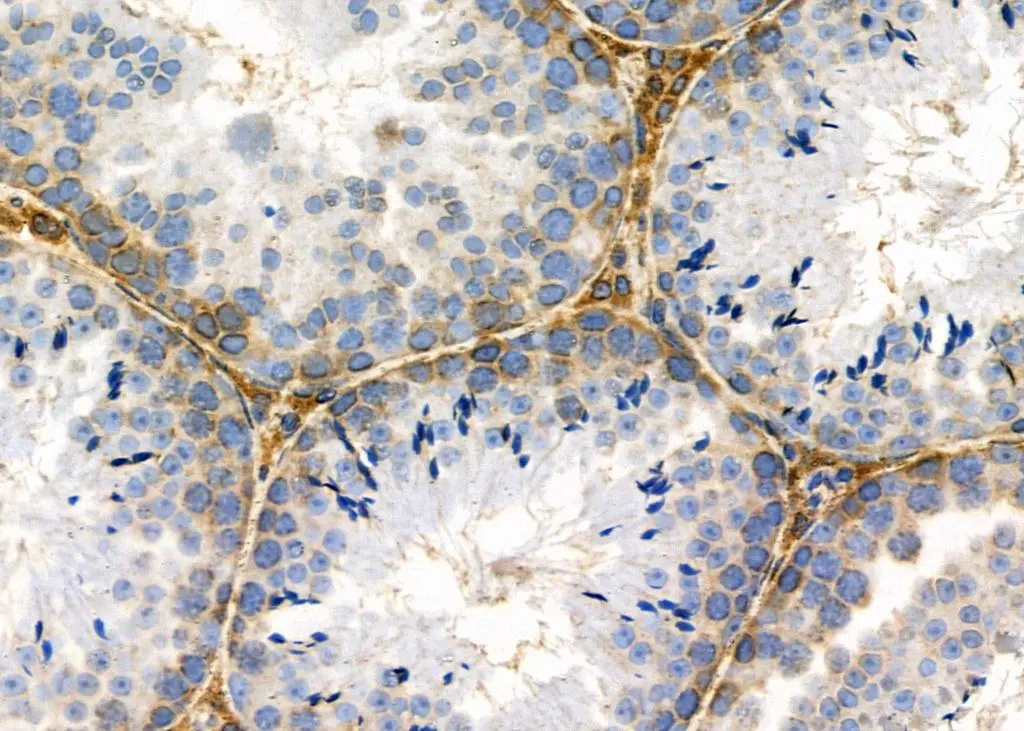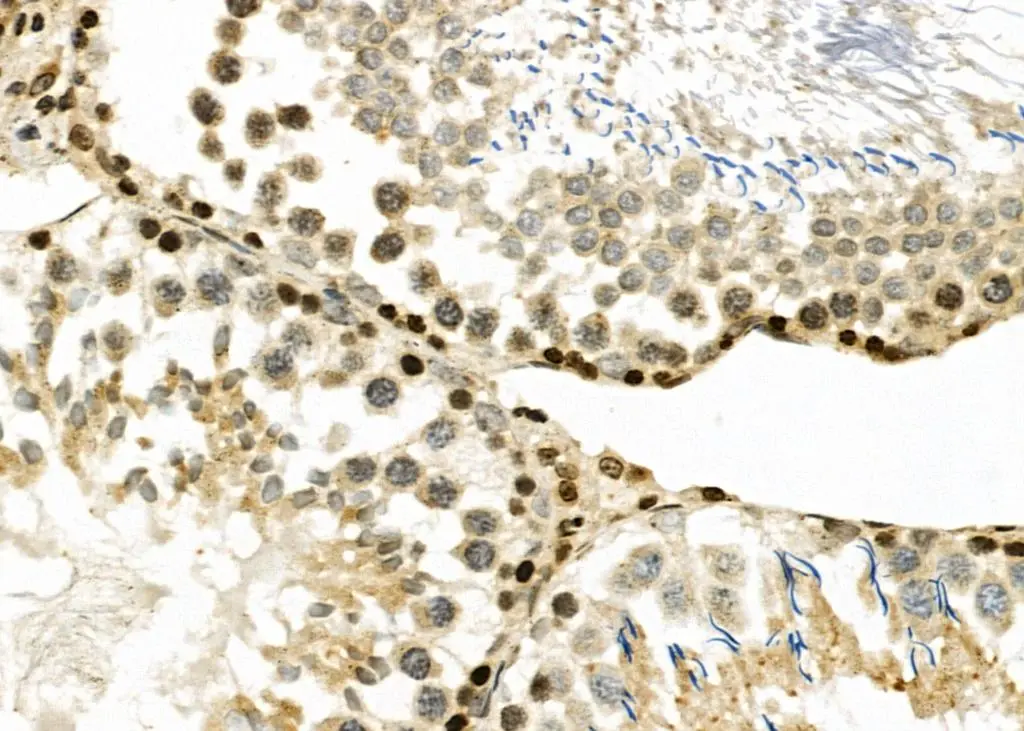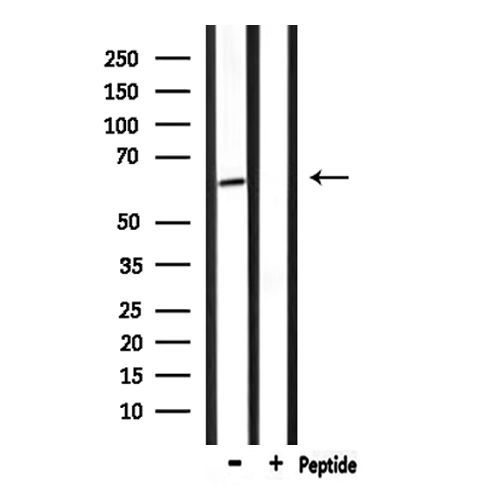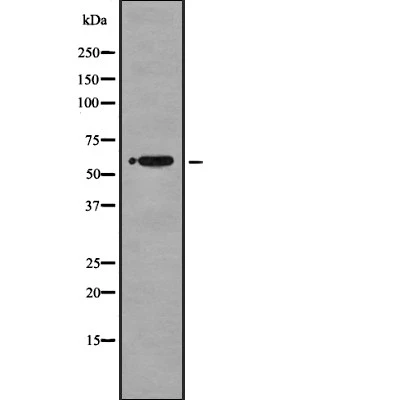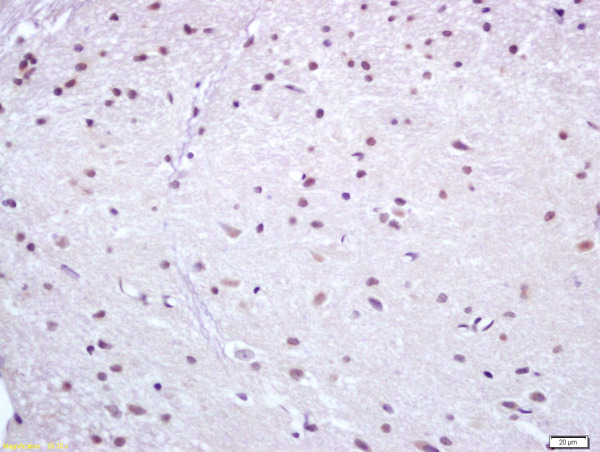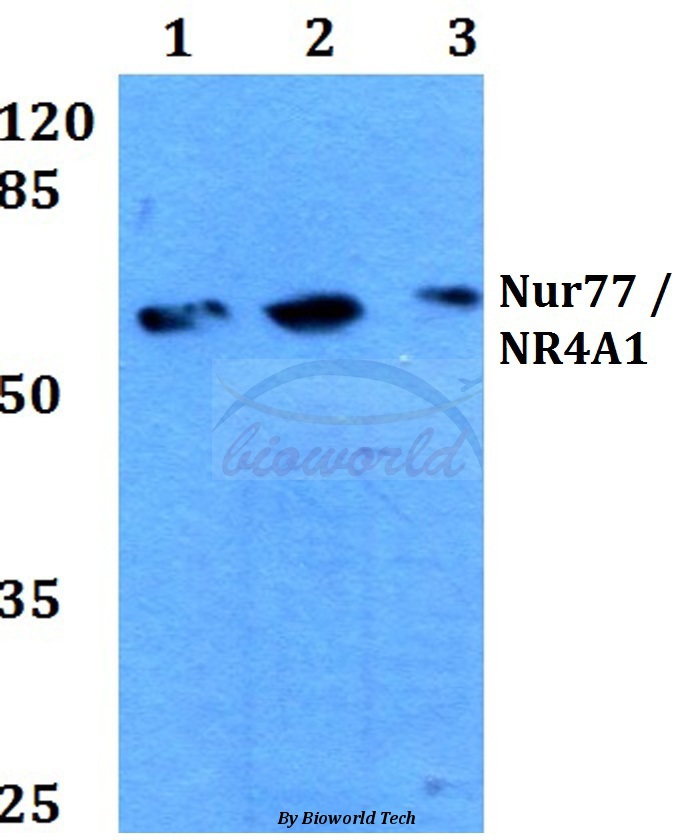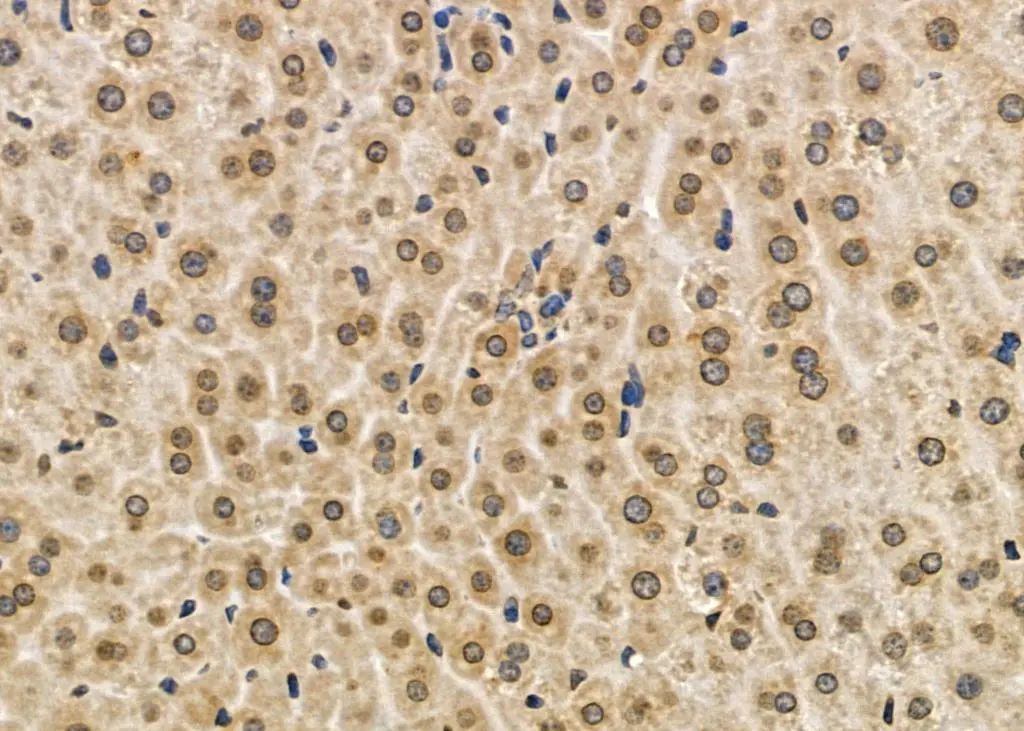
IHC-P analysis of mouse liver tissue using GTX04510 NUR77 antibody. Antigen retrieval : Heat mediated citrate buffer Dilution : 1:100
NUR77 antibody
GTX04510
ApplicationsWestern Blot, ImmunoHistoChemistry, ImmunoHistoChemistry Paraffin
Product group Antibodies
TargetNR4A1
Overview
- SupplierGeneTex
- Product NameNUR77 antibody
- Delivery Days Customer9
- Application Supplier NoteWB: 1:1000-1:3000. IHC-P: 1:50-1:200. *Optimal dilutions/concentrations should be determined by the researcher.Not tested in other applications.
- ApplicationsWestern Blot, ImmunoHistoChemistry, ImmunoHistoChemistry Paraffin
- CertificationResearch Use Only
- ClonalityPolyclonal
- ConjugateUnconjugated
- Gene ID3164
- Target nameNR4A1
- Target descriptionnuclear receptor subfamily 4 group A member 1
- Target synonymsGFRP1, HMR, N10, NAK-1, NGFIB, NP10, NUR77, TR3, nuclear receptor subfamily 4immunitygroup A member 1, ST-59, TR3 orphan receptor, early response protein NAK1, growth factor-inducible nuclear protein N10, hormone receptor, nuclear hormone receptor NUR/77, orphan nuclear receptor HMR, orphan nuclear receptor TR3, steroid receptor TR3, testicular receptor 3
- HostRabbit
- IsotypeIgG
- Protein IDP22736
- Protein NameNuclear receptor subfamily 4immunitygroup A member 1
- Scientific DescriptionThis gene encodes a member of the steroid-thyroid hormone-retinoid receptor superfamily. Expression is induced by phytohemagglutinin in human lymphocytes and by serum stimulation of arrested fibroblasts. The encoded protein acts as a nuclear transcription factor. Translocation of the protein from the nucleus to mitochondria induces apoptosis. Multiple transcript variants encoding different isoforms have been found for this gene. [provided by RefSeq, Jan 2011]
- Storage Instruction-20°C or -80°C,2°C to 8°C
- UNSPSC12352203

